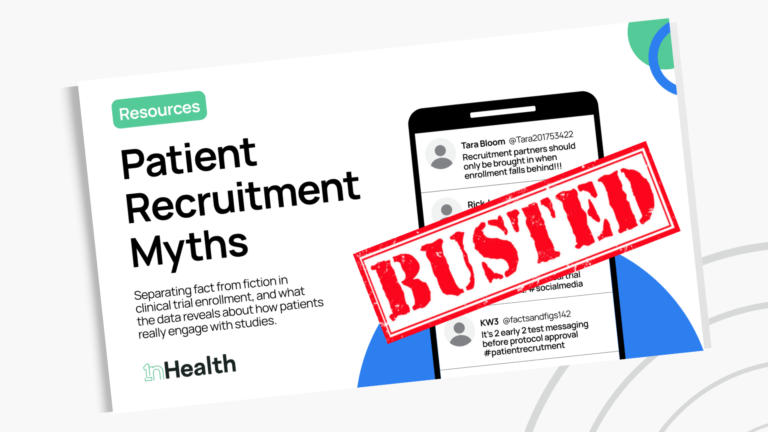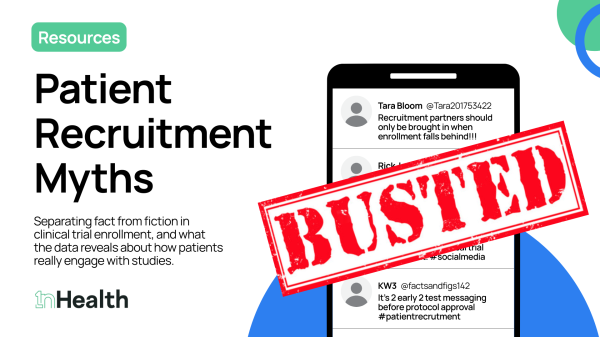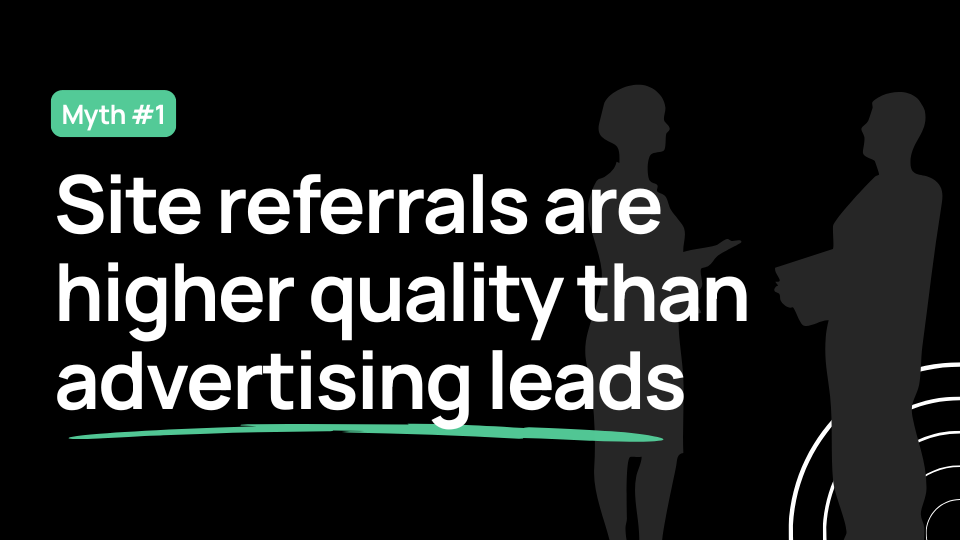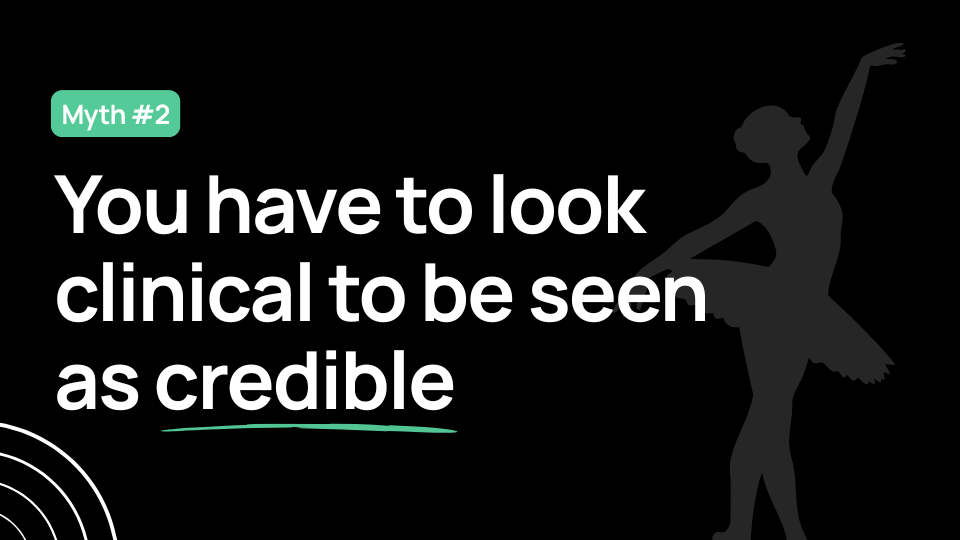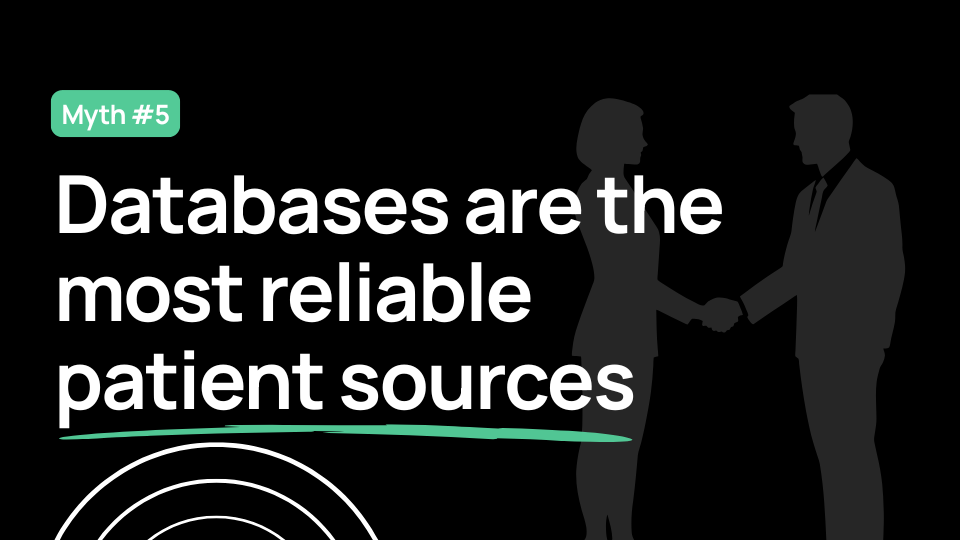Can you accurately predict recruitment and enrollment performance?
This is just one myth we busted!
Download the full eBook to explore all the data and discover what’s really driving quality in patient recruitment.
Rethinking timing when it comes to patient recruitment
There’s a familiar rhythm in clinical research: finalize the protocol, select the sites, secure IRB approval, and then officially launch the trial. Within that framework, many believe messaging cannot be tested until everything is live. It is viewed as a compliance risk or as getting ahead of the process.
This approach is understandable and rooted in the right intentions. It comes from a desire to protect patients, respect oversight, and maintain the integrity of the research. Yet this same caution often creates unnecessary limitations for patient recruitment.

Why patient recruitment and enrollment needs earlier insight
When recruitment teams wait until First Patient In (FPI) to discover what resonates with their audience, they spend the most critical weeks of the trial relying on untested assumptions. Those early days can make or break enrollment momentum, yet valuable time and budget are spent learning on the fly. The smarter approach is not about bending rules. It is about using the time before FPI to gather insights that inform strategy once recruitment begins.
This perspective does not challenge IRB authority or suggest cutting corners. Instead, it acknowledges that preparation and patient understanding can coexist with compliance. By testing messaging concepts responsibly and working within the established framework, teams can reduce waste, strengthen outreach, and get life-changing therapies to patients faster.

The importance of engaging patient recruitment partners as strategic allies, not emergency backups
Patient recruitment often enters the picture too late in the clinical trial process. Many study teams wait until enrollment stalls to bring in external partners, expecting quick fixes rather than long-term solutions. However, the data tell a different story. The Clinical Trials Transformation Initiative (CTTI) analyzed hundreds of studies in 2021 and found that recruitment challenges frequently stem from planning that begins too late.
When sponsors integrated recruitment strategy during protocol design, including feasibility, site readiness, and communication planning, they achieved steadier enrollment timelines and avoided costly mid-study corrections. Early engagement transforms recruitment from a reactive task into a proactive component of study success.

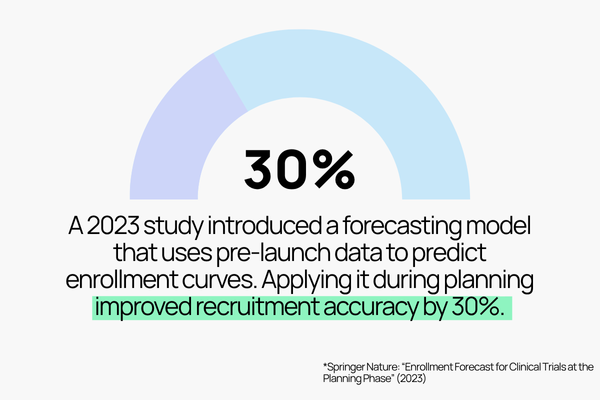
True strategic partnerships start before the first patient is screened. In a BioMedCentral case study of randomized trials across 25 general practices, researchers found that using an internal pilot phase to test recruitment under real conditions before launch significantly improved results. Trials that adopted this “test-before-launch” model increased recruitment accuracy and enrollment rates by an average of 25% compared to prior benchmarks.
By involving patient recruitment partners early, teams can identify friction points, validate assumptions, and strengthen communication strategies before the study even begins.
Predictive planning can also make recruitment more efficient and sustainable. A 2023 study in Springer Nature
introduced a statistical forecasting model that uses pre-launch data such as site readiness, disease prevalence, and screening rates to predict enrollment curves. When forecasting was applied during the planning phase, recruitment projection accuracy improved by 30%, helping teams allocate resources more effectively and optimize outreach.
This type of foresight is only possible when patient recruitment partners are treated as strategic collaborators rather than emergency responders. The earlier they are engaged, the more likely a study is to stay on schedule, within budget, and connected to the patients it aims to serve.
Case Study: Nearly 1 in 8 referrals sign consent thanks to A/B testing
A sponsor partnered with 1nHealth to recruit patients with moderate-to-severe atopic dermatitis across the U.S., Canada, and U.K.
Through early A/B testing, we found that humorous, relatable messaging resonated most with eczema patients, reflecting how the community often uses humor to connect and cope.
With scroll-stopping creative and empathetic tone, campaigns across channels generated 412 qualified referrals, 11.8% converted to ICF signings. Early testing that proved authenticity and understanding would drive engagement.

From reactive to ready: Why early patient recruitment partnership drives enrollment success
The core of the myth is the fear of promoting a trial that isn’t yet enrolling. But pre-launch testing isn’t about running ads that promise enrollment. It’s about de-risking your creative strategy by testing its core components in a compliant, unbranded, or carefully gated manner.
Think of it as a series of controlled experiments to gather intelligence. Without ever mentioning a specific drug, protocol, or a promise of enrollment, you can gain powerful insights on key elements of your campaign.
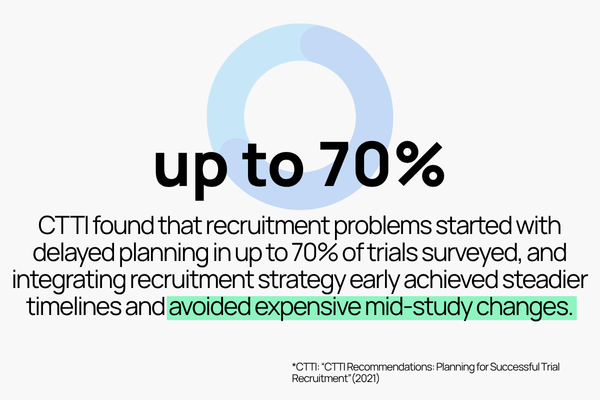
Aligning early on patient recruitment goals
Many trials still treat patient recruitment as an afterthought, bringing in partners only when enrollment begins to stall. The most successful studies approach recruitment as a core part of trial design, not a reaction to delays.
Integrating recruitment planning early, alongside feasibility assessments, site readiness, and communication strategy, creates a smoother path to activation and more predictable timelines. Partnering early ensures recruitment is built into the foundation of your study rather than added under pressure later.
Testing and validating with partners before launch
Engaging recruitment partners early allows you to test ideas and refine strategies before the first patient is ever screened. Running small pilots, testing creative directions, and identifying geographic or demographic challenges in advance can uncover valuable insights that save time and budget later.
Early collaboration helps teams replace guesswork with real data, ensuring that when recruitment officially begins, every message, channel, and target audience is already validated and ready to perform.
Build trust through long-term partnership
Treating recruitment partners as strategic collaborators rather than emergency responders creates lasting value. When partners are involved from the beginning, they develop a deeper understanding of your protocol, patient population, and communication needs. This familiarity allows for faster execution, smarter allocation of resources, and greater flexibility when challenges arise. A long-term partnership built on trust and shared insight leads to more efficient operations, stronger engagement, and a better overall experience for patients and sites alike.
It's time for a stronger start to your next clinical trial
The belief that you must wait until a trial is live to test messaging is a myth that costs time, money, and momentum. A thoughtful, compliant, and data-driven pre-launch testing plan is not only possible, it’s a strategic advantage.
It allows your patient recruitment efforts to launch with precision, guided by evidence of what truly connects with your patient community. It transforms your recruitment partner from a vendor executing a campaign to a strategic team de-risking your investment.

